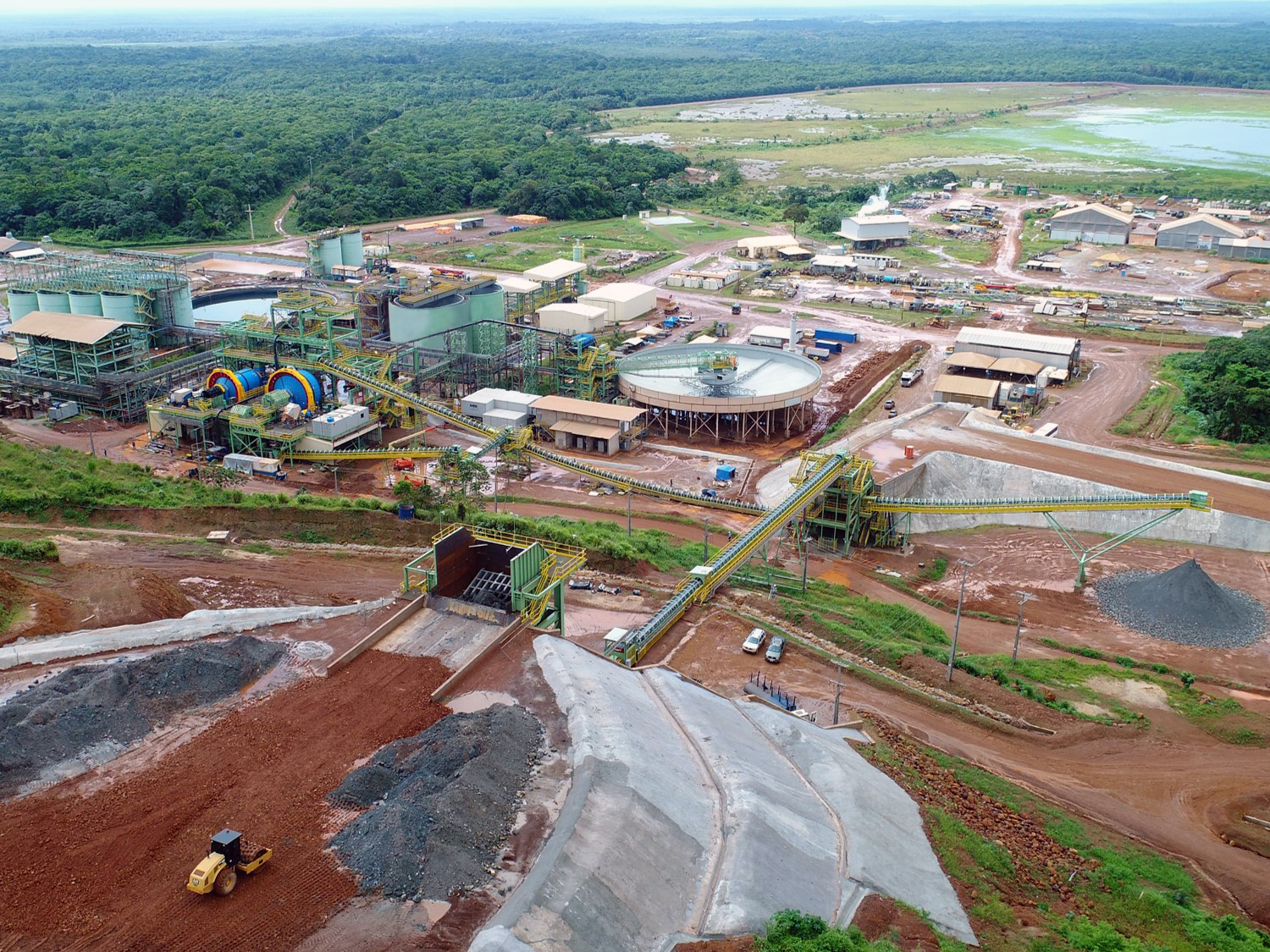Ivanhoe awarded new exploration rights
Aerial view of the Platreef project showcasing latest construction activities, with Shaft 1 on the right and Shaft 2 hitch-to-collar construction in the center. Credit: Ivanhoe Mines
Ivanhoe Mines (TSX: IVN) has been granted three new highly prospective exploration rights covering total surface area of 80 square kilometres adjacent to the company’s Platreef project in Limpopo province, South Africa.
Platreef is a palladium, rhodium, nickel, platinum, copper and gold development project that is 64% owned by Ivanhoe. A 26% interest is held by Ivanhoe’s broad-based, black economic empowerment (B-BBEE) partners, which include 20 local host communities with approximately 150,000 people, project employees and local entrepreneurs. A Japanese consortium owns the remaining 10% interest.
The project hosts a thick, underground deposit known as Flatreef, containing approximately 58.8 million oz. of precious metals (palladium, rhodium, platinum and gold), as well as 6.2 billion lb. of copper and nickel in indicated resources, plus 94.3 million oz. of precious metals and 11.9 billion lb. of copper and nickel in inferred resources.
It is located on the northern limb of South Africa’s Bushveld Complex, where platinum group metals mineralization is primarily hosted within the Platreef, a mineralized sequence that is traced more than 30 km along strike.
Ivanhoe’s project, within the Platreef’s southern sector, comprises two contiguous properties: Turfspruit and Macalacaskop. Turfspruit, the northernmost property, is contiguous to Anglo Platinum’s Mogalakwena group of properties. The Flatreef deposit lies entirely on the Turfspruit and Macalacaskop properties.
The initial scope of the development plan is to fast-track Platreef into production, starting with an initial 700,000 t/y underground mine using the existing Shaft 1 and a new on-site concentrator. First concentrate production from Phase 1 is planned for Q3 2024, with the Phase 2 expansion expected following the commissioning of Shaft 2 in 2027.
Phase 1 average annual production is expected to be 113,000 oz. of precious metals, plus 5 million lb. of nickel and 3 million lb. of copper. The average annual production of the Phase 2 expansion is expected to increase to 591,000 oz., plus 26 million lb. of nickel and 16 million lb. of copper.
Platreef is projected to become Africa’s lowest-cost producer of platinum group metals, nickel, copper and gold.
New exploration territory
The new exploration rights form a continuous block situated on the southwest border of Ivanhoe’s existing Platreef mining rights at Turfspruit and Macalacaskop, which together cover 78 square kilometres in area.
The exploration rights overlap a significant geophysical gravity anomaly known as the “Mokopane Feeder”, the centre of which is located approximately 10 km from Platreef’s Shaft 1.
“The Bushveld Complex sits among the most unique and valuable mineral endowments on our planet. These exploration rights are postulated to be geologically significant by our leading geoscientists. The new exploration rights are located at the intersection of a highly significant gravity geophysical anomaly and major regional geological structures,” said Robert Friedland, Ivanhoe’s executive co-chairman.
“Therefore, the ‘Mokopane Feeder’ may be related to the actual source of the giant mineralizing system feeding the entire northern limb of the Bushveld Complex,” he added.
The Bushveld Complex is currently the largest known, layered igneous complex in the world and is host to the largest known reserves of platinum group metals, chromium and vanadium, as well as gold and base metals including nickel and copper.
According to the geological team at Ivanhoe, the “Mokopane Feeder” anomaly is the most significant gravity feature in the entire Bushveld Complex. Academic studies based on historical data hypothesized that the anomaly represents a primary feeder zone to the Rustenburg layered suite of the northern limb.
To better understand the conceptual “Mokopane Feeder” target, Ivanhoe said it will begin a detailed high-resolution, airborne-magnetic and gradiometer-gravity survey over the project area. The surveys are expected to be completed in early 2023.
Share this content:














